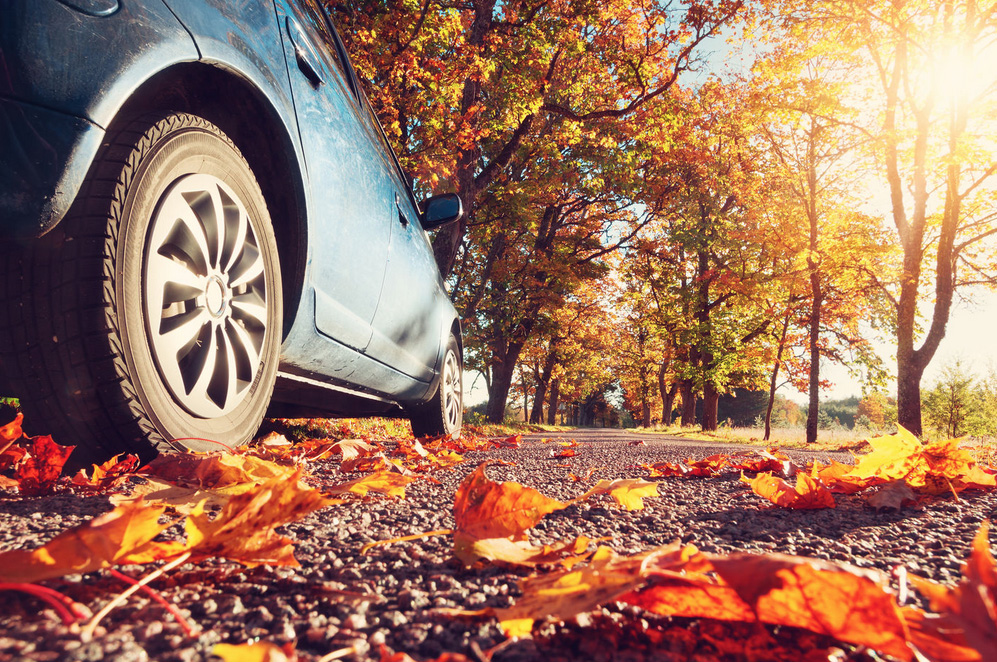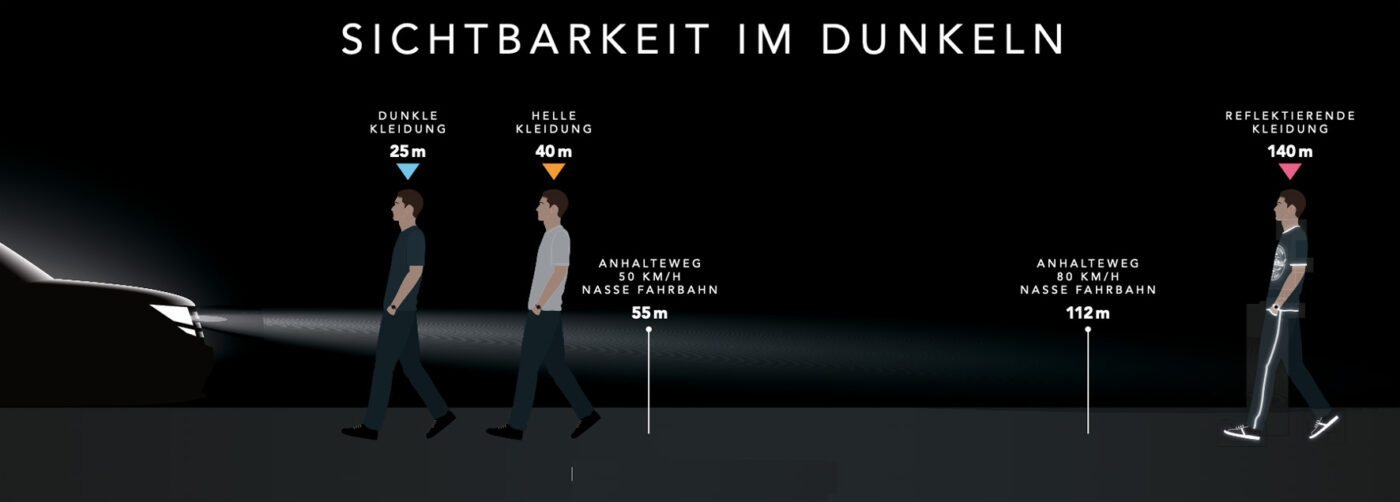Guidebook: Safe driving in autumn
IMPORTANT TIPS Autumn requires road users to adapt to the often more difficult conditions. This includes proper lighting on cars and bicycles and appropriate caution when traveling overland.

While people are usually carefree on the road in summer, autumn poses greater challenges for road users with earlier onset of darkness and thus deer crossing, cool temperatures and fog.
In rain, snow or fog only with dipped headlights
Anyone who only drives with dipped headlights on despite poor visibility in rain, snow or fog must not forget that most cars are then unlit at the rear. In dubious light conditions, you should therefore always drive with dipped headlights.
Fog lights and rear fog lights may only be used when visibility is less than 50 meters due to fog, driving snow or heavy rain.
As a reminder, e-bikes must also be equipped with dipped headlights since April 1, 2022. In addition to proper lighting for all two-wheelers and pedestrians, good visibility is fundamentally important, meaning bright or reflective clothing for everyone out and about.

Be careful when crossing game or in wooded areas
Good lighting is also important when wild animals may be on the road. As a general rule, you should also drive appropriately and exercise caution when crossing wildlife or wooded areas. You should always be able to stop within the distance you can see.
If a collision with an animal does occur, it is important to act quickly: Stop, switch on the hazard warning lights, put on the safety vest and set up the breakdown triangle. After securing the accident site, the police should be notified.

... and you should definitely also pay attention to this in the fall
Due to the lower temperatures, the risk of skidding is greater in the fall, and the braking distance on wet and cold roads becomes longer. Water puddles also increase the risk of aquaplaning. At low temperatures, ice can be expected to form earlier on bridges. For car drivers, it is therefore urgent to change to winter tires now. They should be fitted from October to Easter.









